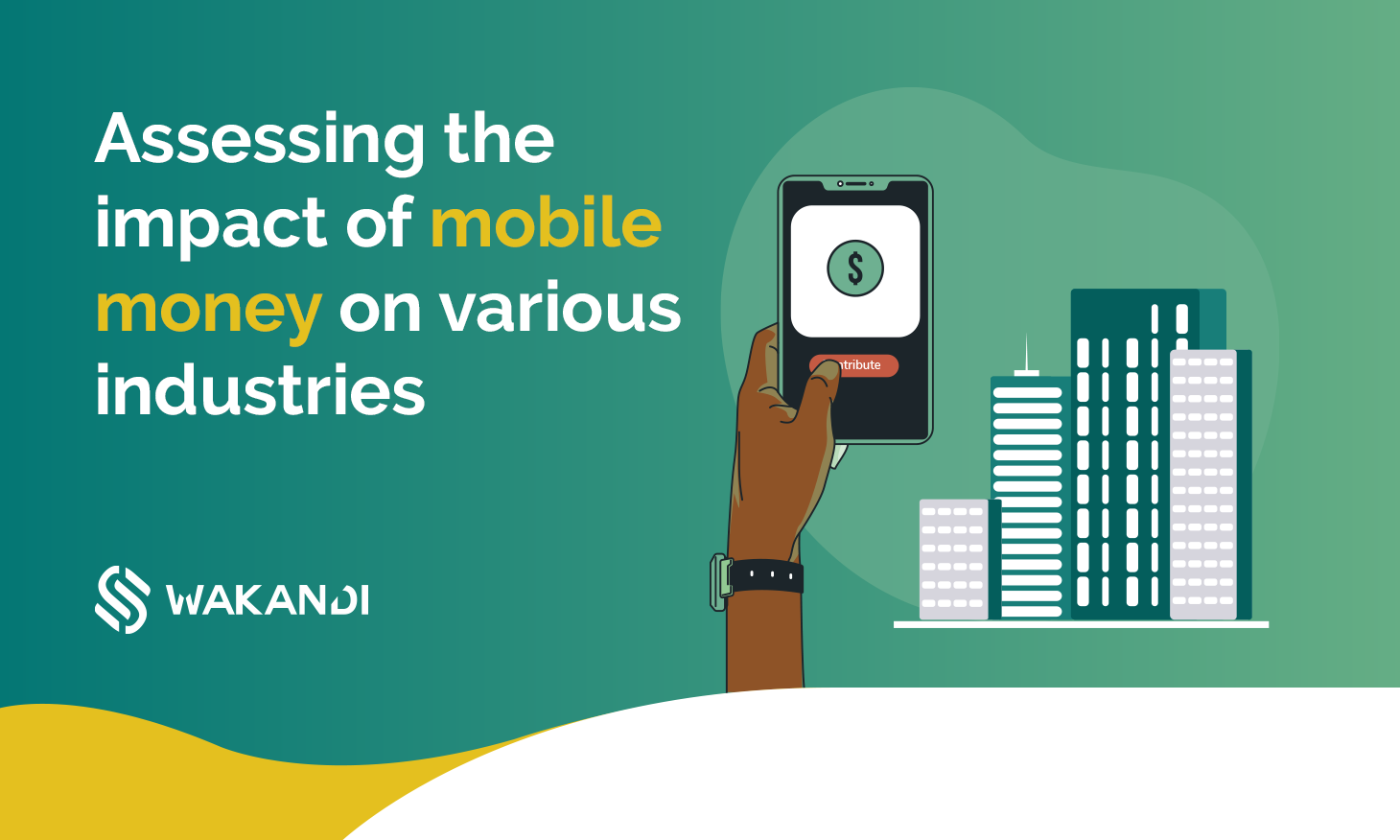Assessing the impact of mobile money on various industries

“Mobile money accounts now surpass bank accounts in Sub-Saharan Africa, and greater financial inclusion has benefited large swathes of the population.”
– International Monetary Fund (IMF)
While access to traditional bank accounts and banking services remains critical, mobile phones’ vast availability has allowed millions of people in Africa to access financial services. It has benefitted a major chunk of the unbanked population, including the young, the poor, and women.
Most people rely on mobile wallets to send or receive money and make online payments. They use it to pay for bills, receive their salaries, and pay for groceries in retail stores.
Mobile money has also allowed businesses in various industries to innovate and digitalize their processes. It has brought many benefits to small and medium enterprises, more prominent organizations, and government to achieve their goals and benefit the end-users. Let’s talk about the popular industries mobile money has impacted and how the industry players continue to innovate.
- Fintech
- Agriculture
- Retail
- Remittance
Fintech
Mobile money has disrupted traditional financial services by providing a better way to transfer funds instead of cash. Where cash is still the king, the value of mobile payments has grown over the years to boost financial inclusion. Consider how M-Pesa, T-Pesa, and MTN MoMo are helping societies to become more financially included. It has allowed African businesses to move up the financial services value chain. With mobile payments, customers in Sub-Sharan Africa are gaining access to business loans, savings, and other services as they would get in a bank.
Today, more young companies and startups with potential ideas are entering the African market. They aim to digitalize manual services and offer faster and secure payments at a click of a button. At Wakandi, we aim to use technology and digital money to boost financial inclusion in Africa. We aim to promote innovation and build a society that is ready for the future.
Read more: Delivering a cashless experience
Agriculture
A vast majority of smallholder farmers are unbanked and rely on cash for buying and selling their yields. Almost 75% of adults in developing countries, including Africa receive payments for their produce in cash.
Mobile money is bridging the gap in the agricultural sector by digitalizing various processes. Several mobile money providers have partnered with companies in the agricultural sector to digitalize payments to smallholder farmers. MTN launched mAgric in 2018 as a pilot to enable digitisation of the entire procurement and payment process for Ghana’s farmers. mAgric app allows an agribusiness to record crop procurement from farmers and then pay them instantly through mobile money.
Mobile payments not only make it easier for farmers but also create a digital footprint for those who are unbanked. In turn, it opens doors for them to avail financial services from banks and other traditional financial institutions.
Retail
The retail industry in Africa has dramatically driven by the emergence and growth of mobile money. Countless stores selling groceries, clothes, daily essentials and more, offer the facility of mobile payments. Today, various acceptance technologies are available to mobile money merchants, including QR codes, NFC, and USSD. USSD is a popular mode of mobile payment in Africa when it comes to retail payments.
The rise in mobile money is also one of the reasons for the rising e-commerce in Sub-Sarahan Africa. Nigeria, South Africa, and Kenya account for more than half of Africa’s online shoppers in 2017.
International remittance
One out of seven African receives remittance from a friend or family member abroad. However, Africans pay the highest transaction fees globally, even reaching 12.4% of the transaction value. Mobile money has emerged as a powerful platform for local and international remittances.
The total value of mobile money-enabled international remittances has already reached $7.3 billion in 2019.
So far, many initiatives and partnerships have been made to reduce the cost of payments and promote remittances through mobile channels. According to GSMA, the industry has been experimenting with a new model that uses mobile money for remittances.
- Tigo Tanzania and Tigo Rwanda
- Airtel Zambia, Airtel Rwanda, and Airtel DRC
- Safaricom Kenya and Vodacom Tanzania
To conclude, mobile money has established itself as a crucial tool to facilitate innovation while reducing the cost of payments and maximising the impact on developing African societies.

Comments